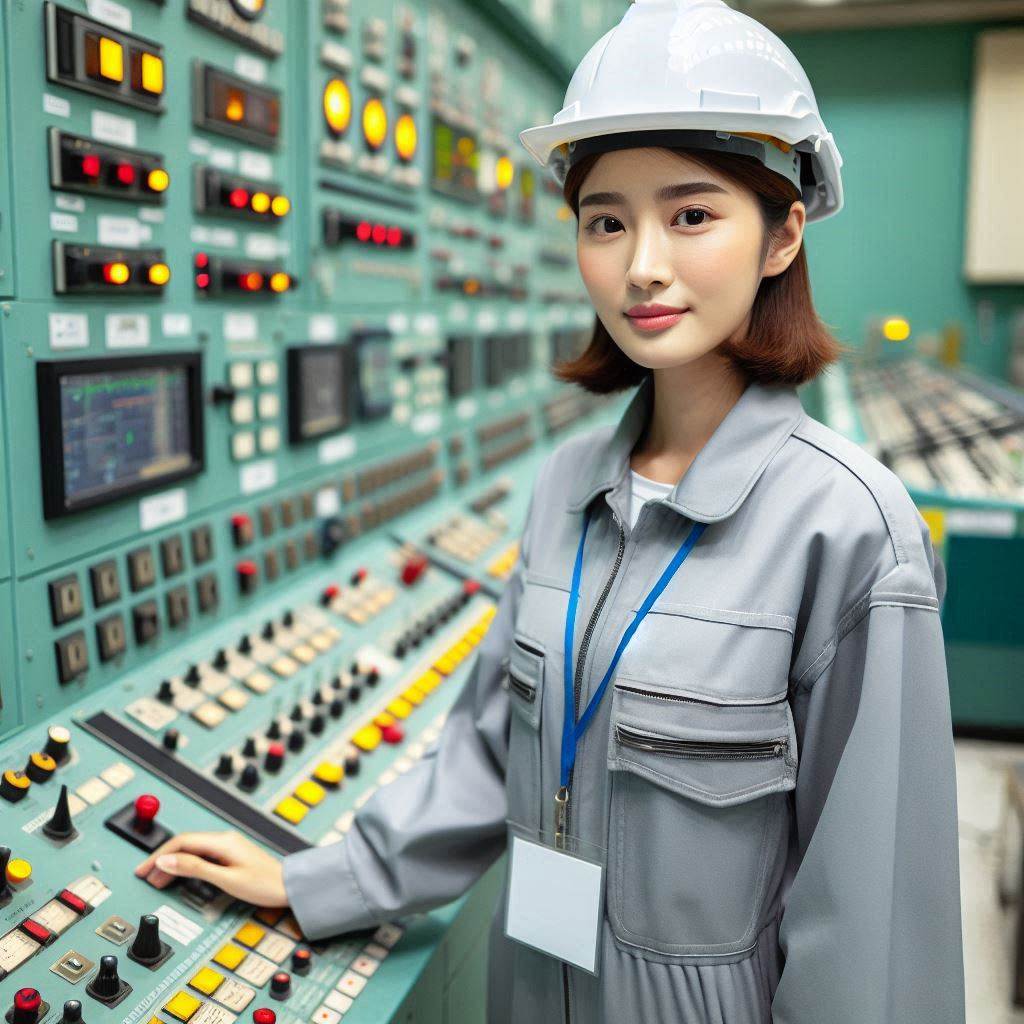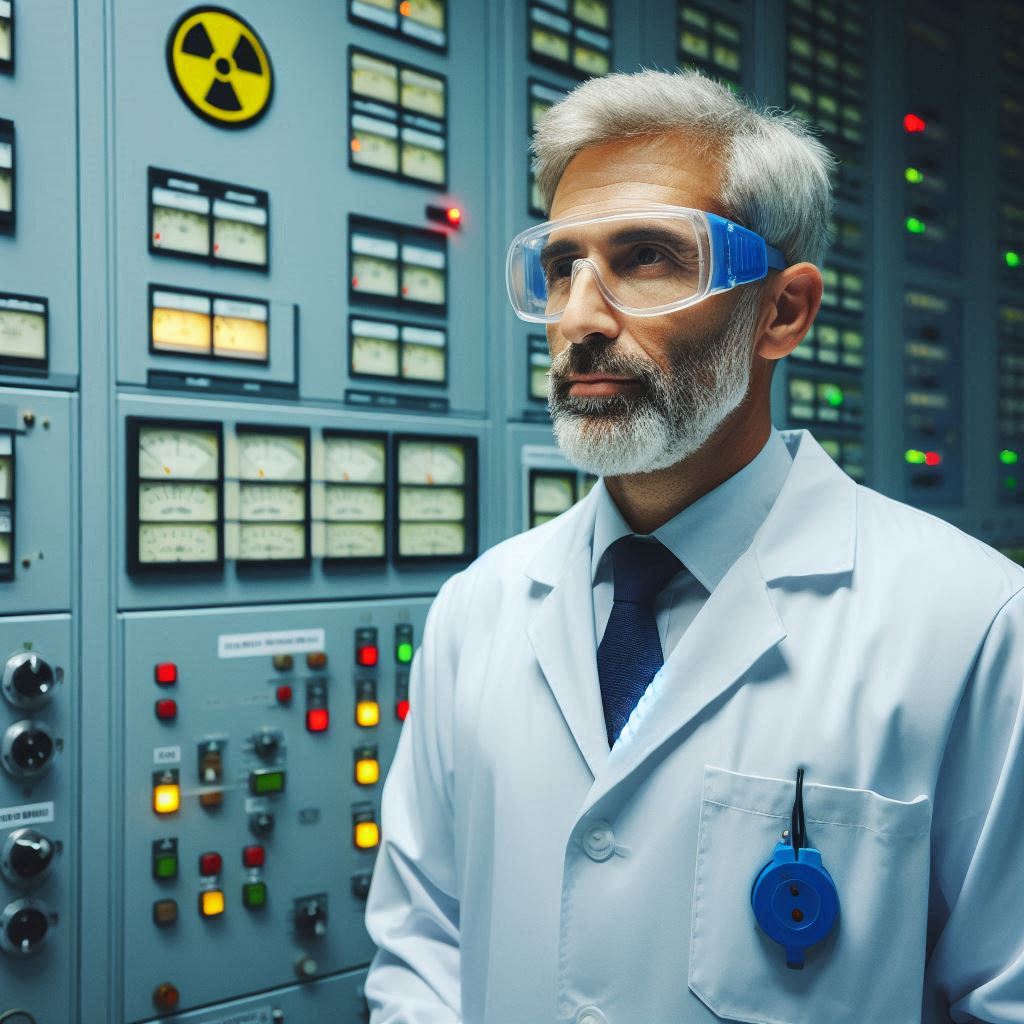Introduction
Overview of nuclear engineering
Nuclear engineering involves the application of nuclear physics and principles to develop technology for energy production, medical applications, and other industries.
This field focuses on harnessing the power of atomic nuclei for practical uses, ensuring safety and efficiency.
Engineers in this field design reactors, manage nuclear waste, and develop radiation therapies, playing a critical role in advancing various sectors.
Importance of bridging theory and practice in the field
Bridging theory and practice in nuclear engineering is essential.
Theoretical research provides a deep understanding of nuclear processes and mechanisms.
However, without practical application, these insights remain untested and unrealized.
By integrating theory with hands-on practice, engineers can develop innovative solutions that are both effective and safe.
This combination ensures that new technologies can be reliably implemented, addressing real-world challenges and advancing the field of nuclear engineering.
Balancing theoretical knowledge with practical experience leads to more robust and reliable nuclear technologies, contributing to advancements in energy production, medical treatments, and environmental protection.
It also fosters continuous improvement, as practical experiences feedback into theoretical research, refining and enhancing our understanding and capabilities in nuclear engineering.
What is nuclear engineering?
Definition and Scope of Nuclear Engineering
Nuclear engineering is a specialized field that focuses on the study and application of nuclear processes and radiation.
Engineers in this discipline design and manage systems that utilize nuclear energy for various purposes.
The field includes nuclear power generation, radiation protection, nuclear medicine, and more.
It covers reactor design, fuel cycles, and waste management, ensuring the safe and efficient use of nuclear technology.
Applications of Nuclear Engineering in Various Industries
Nuclear engineering finds applications across multiple industries, demonstrating its versatility and impact.
In the energy sector, nuclear engineers work on designing and operating reactors to produce electricity.
They develop systems to manage fuel cycles and handle radioactive waste, ensuring safe energy production.
In the medical field, nuclear engineers collaborate with healthcare professionals to use radioactive isotopes for diagnostic and therapeutic purposes.
They design and maintain equipment for imaging and treatment, significantly advancing patient care.
The defense sector benefits from nuclear engineering through the development and maintenance of nuclear weapons and related technologies.
Engineers ensure these systems are reliable and secure, contributing to national security.
Aerospace engineering also leverages nuclear technology.
Engineers design nuclear propulsion systems for spacecraft, providing a powerful energy source for long-duration space missions.
This innovation holds the potential to revolutionize space travel.
In industry, nuclear engineers apply radiation-based inspection techniques to test materials and ensure the integrity of structures.
This application is crucial for maintaining high safety and quality standards in various sectors.
Overall, nuclear engineering bridges theoretical knowledge with practical applications, addressing diverse challenges and driving technological advancement across industries.
Read: Biomedical Engineering: Regulatory Affairs
Theoretical Foundations of Nuclear Engineering
Nuclear engineering is grounded in the principles of nuclear physics and radiation.
This field focuses on harnessing the energy released from nuclear reactions.
It requires a deep understanding of atomic and subatomic processes.
Engineers apply these theoretical foundations to design systems that utilize nuclear energy safely and efficiently.
Principles of Nuclear Physics and Radiation
The core principles of nuclear engineering include the study of nuclear physics and radiation.
Nuclear physics explores the behavior and properties of atomic nuclei.
It examines how nuclei interact and the forces that bind them together.
Radiation studies involve understanding the emission of energy from atomic nuclei.
This includes various types of radiation such as alpha particles, beta particles, and gamma rays.
These principles are fundamental for developing technologies that utilize nuclear energy and radiation.
Understanding Nuclear Reactions and Processes
Nuclear reactions are central to nuclear engineering.
These reactions involve changes in an atom’s nucleus, leading to the release or absorption of energy.
There are two main types of nuclear reactions: fission and fusion.
Fission is the splitting of a heavy nucleus into smaller nuclei, releasing a significant amount of energy.
Fusion is the combining of light nuclei to form a heavier nucleus, also releasing energy.
Engineers harness these reactions in reactors to produce electricity or in other applications like nuclear propulsion systems.
In addition to fission and fusion, understanding radioactive decay is crucial.
This process involves unstable nuclei releasing radiation to reach a stable state.
Knowledge of these processes allows engineers to design safe and effective systems for energy production, medical applications, and more.
By mastering these theoretical foundations, nuclear engineers can innovate and improve technologies that leverage nuclear energy and radiation.
Their expertise is essential for advancing the field and addressing global challenges with nuclear technology.
Read: Graduate Studies in Biomedical Engineering
Practical Applications of Nuclear Engineering
Nuclear engineering translates theoretical knowledge into practical applications across various sectors.
Engineers in this field design, develop, and manage systems that utilize nuclear energy and radiation for a wide range of purposes.
From energy production to medical advancements, nuclear engineering impacts many aspects of modern life.
Design and Operation of Nuclear Power Plants
One of the most prominent applications of nuclear engineering is the design and operation of nuclear power plants.
These plants generate electricity through controlled nuclear reactions, primarily using fission.
Engineers design reactors to ensure they operate safely and efficiently.
They develop systems for controlling the reactions, managing the heat produced, and converting it into electrical energy.
Operation involves continuous monitoring and maintenance to ensure safety and reliability.
This process includes handling fuel, managing reactor cores, and adhering to strict safety protocols.
Nuclear Waste Management and Nuclear Medicine
Another critical area of nuclear engineering is nuclear waste management.
The byproducts of nuclear reactions can remain radioactive and hazardous for thousands of years.
Engineers develop strategies to safely handle, transport, and store this waste.
This involves designing containment systems that prevent the release of radiation into the environment.
Engineers also research and implement methods for reducing the volume and toxicity of nuclear waste.
They work on advanced techniques like reprocessing and recycling spent fuel, aiming to minimize the environmental impact and enhance sustainability.
Nuclear engineering also plays a vital role in the medical field, particularly in nuclear medicine.
This application uses radioactive isotopes for diagnostic and therapeutic purposes.
Engineers design and maintain equipment that allows for precise imaging of the human body.
Techniques such as PET and SPECT scans provide detailed images that aid in diagnosing various conditions.
Additionally, nuclear engineers develop therapies that use radiation to treat diseases, particularly cancer.
Challenges in Bridging Theory and Practice
Bridging theory and practice in nuclear engineering presents numerous challenges.
Theoretical models must accurately reflect real-world conditions, which can be complex and unpredictable.
Engineers must translate these models into practical applications while ensuring safety and efficiency.
This process involves rigorous testing, validation, and often, adaptation of theoretical principles to suit practical constraints.
Additionally, the high costs and long timelines associated with nuclear projects add layers of difficulty in aligning theory with practice.
Safety Concerns and Regulatory Requirements
Safety is paramount in nuclear engineering, given the potential risks associated with nuclear energy and radiation.
Engineers must design systems that prevent accidents and mitigate their impact if they occur.
This requires comprehensive safety analysis and the implementation of multiple safety barriers.
Regulatory requirements are stringent and vary by country, but they generally involve rigorous inspections, continuous monitoring, and adherence to international safety standards.
Compliance with these regulations ensures that nuclear facilities operate within safe parameters, protecting both the public and the environment.
Integration of New Technologies in Nuclear Engineering
The integration of new technologies in nuclear engineering is essential for advancement but presents its own set of challenges.
Innovations such as advanced reactor designs, new materials, and digital control systems promise improved performance and safety.
However, incorporating these technologies requires extensive research, testing, and regulatory approval.
Engineers must ensure that new technologies are compatible with existing systems and infrastructure.
They also need to address potential cybersecurity threats that come with increased digitalization.
Balancing innovation with reliability and safety is a key challenge in the field.
Essentially, nuclear engineering involves navigating complex challenges to bridge theory and practice.
Safety concerns and regulatory requirements necessitate meticulous planning and adherence to standards.
The integration of new technologies drives progress but requires careful implementation.
Through these efforts, nuclear engineers continue to advance the field, ensuring that nuclear technology remains a safe, efficient, and sustainable energy source.
Read: Biomedical Engineering: Impact on Public Health

Delve into the Subject: Common Challenges Faced by Solar PV Installers
Explore Further: How to Become a Field Service Technician
See Related Content: How to Prepare for a Network Engineer Interview
Transform Your Career Today
Unlock a personalized career strategy that drives real results. Get tailored advice and a roadmap designed just for you.
Start NowDelve into the Subject: Top U.S. Marine Engineering Schools and Programs
Importance of Hands-On Experience in Nuclear Engineering
Hands-on experience is crucial in nuclear engineering.
It bridges the gap between theoretical knowledge and practical application.
By engaging in real-world scenarios, engineers gain a deeper understanding of complex systems and processes.
This experience enhances their problem-solving skills and prepares them for the challenges they will face in their careers.
Practical training complements academic learning, making engineers more proficient and confident in their roles.
Internships and Practical Training Opportunities
Internships and practical training opportunities are essential for aspiring nuclear engineers.
They provide invaluable exposure to the industry and its practices.
During internships, students work alongside experienced professionals, learning about reactor operations, safety protocols, and regulatory compliance.
They participate in projects that give them a taste of real-world engineering problems and solutions.
Practical training programs often include lab work, simulations, and site visits, offering a comprehensive learning experience.
These opportunities help students build a solid foundation and make informed career choices.
Real-World Applications of Theoretical Knowledge
Theoretical knowledge in nuclear engineering is essential, but its real value lies in its application.
Engineers use this knowledge to design and operate nuclear reactors, ensuring they run efficiently and safely.
They apply principles of nuclear physics and radiation to develop medical imaging and treatment technologies.
In waste management, they use theoretical models to devise methods for safely handling and storing radioactive materials.
Hands-on experience allows engineers to test and refine these theories in practical settings, leading to innovative solutions and advancements in the field.
In summary, hands-on experience is vital for nuclear engineers.
Internships and practical training offer opportunities to apply theoretical knowledge in real-world scenarios.
This experience not only enhances their skills but also prepares them for the complexities of their profession.
By combining theoretical learning with practical application, nuclear engineers can effectively address the challenges and opportunities in their field.
Read: Biomedical Engineering: Industry Outlook 2024
Case Studies in Successful Application of Theory to Practice
Case studies highlight the successful application of theory to practice in nuclear engineering.
One notable example is the development of the pressurized water reactor (PWR).
Theoretical models of heat transfer and fluid dynamics guided the design of these reactors.
Engineers applied these principles to create a reactor that efficiently produces electricity while maintaining high safety standards.
The success of PWRs demonstrates how theoretical knowledge can be translated into practical, reliable technology.
Another example is the use of nuclear engineering in space exploration.
The development of radioisotope thermoelectric generators (RTGs) for spacecraft is a case study in innovative application.
Engineers used principles of nuclear decay and thermoelectric conversion to design a power source that can operate in the harsh environment of space.
RTGs have powered numerous missions, including the Voyager probes and Mars rovers, showcasing the practical benefits of nuclear engineering.
Examples of Innovative Nuclear Engineering Projects
Innovative nuclear engineering projects continue to push the boundaries of the field.
One such project is the development of small modular reactors (SMRs).
These reactors offer a more flexible and cost-effective solution compared to traditional large reactors.
Engineers use advanced materials and safety features to design SMRs that can be deployed in diverse locations, including remote areas and industrial sites.
SMRs represent a significant advancement in making nuclear power more accessible and sustainable.
Another groundbreaking project is the ITER (International Thermonuclear Experimental Reactor) initiative.
This project aims to demonstrate the feasibility of nuclear fusion as a large-scale energy source.
Engineers and scientists from around the world collaborate to apply theoretical fusion models to build a functioning reactor.
If successful, ITER could revolutionize energy production, offering a virtually limitless and clean energy source.
Impact of Bridging Theory and Practice on Advancements in the Field
Bridging theory and practice has a profound impact on advancements in nuclear engineering.
It enables the development of safer, more efficient technologies.
For instance, the implementation of passive safety systems in reactors is a direct result of applying theoretical safety models to practical designs.
These systems can shut down a reactor automatically without human intervention, significantly enhancing safety.
Moreover, the integration of digital technologies, such as advanced simulations and artificial intelligence, has transformed the field.
Engineers use these tools to model complex nuclear systems, predict performance, and optimize operations.
This integration has led to improved reactor designs, better maintenance practices, and enhanced overall efficiency.
In summary, case studies and innovative projects demonstrate the successful application of theory to practice in nuclear engineering.
Bridging this gap drives significant advancements, leading to safer, more efficient, and more sustainable technologies.
The continuous interplay between theory and practice ensures that nuclear engineering remains at the forefront of technological innovation.
Delve into the Subject: Environmental Engineering and Climate Policy
Conclusion
Recap of the importance of bridging theory and practice in nuclear engineering
Bridging theory and practice in nuclear engineering is crucial.
This integration ensures that innovative designs and concepts become real-world applications.
It enhances safety, efficiency, and sustainability in nuclear energy production.
Practical application of theoretical knowledge leads to more reliable and effective nuclear technologies.
This blog emphasized the need for a strong connection between theoretical research and practical implementation.
Theory provides the foundation for understanding nuclear processes, while practice tests and refines these concepts.
Future trends and opportunities in the field of nuclear engineering
Looking ahead, nuclear engineering will see exciting trends and opportunities.
Advanced reactor designs, including small modular reactors, will gain prominence.
Innovations in nuclear waste management will reduce environmental impacts.
There will be increased emphasis on fusion energy research, aiming for cleaner and more abundant energy sources.
Continued collaboration between academia, industry, and government will drive these advancements.
Together, we can ensure a sustainable and secure energy future.




